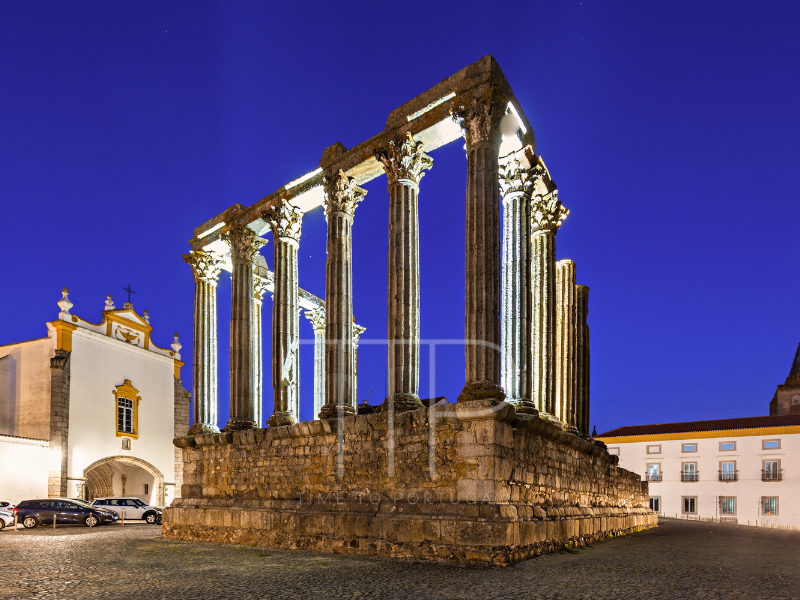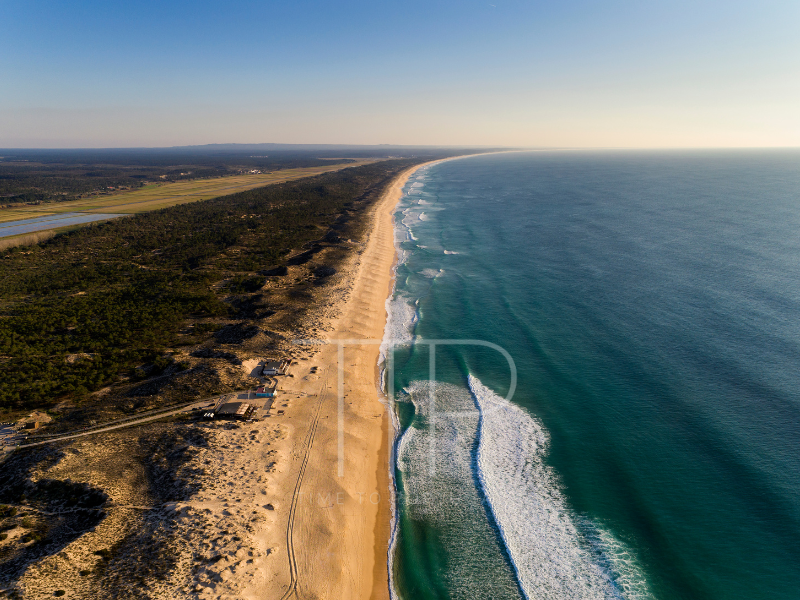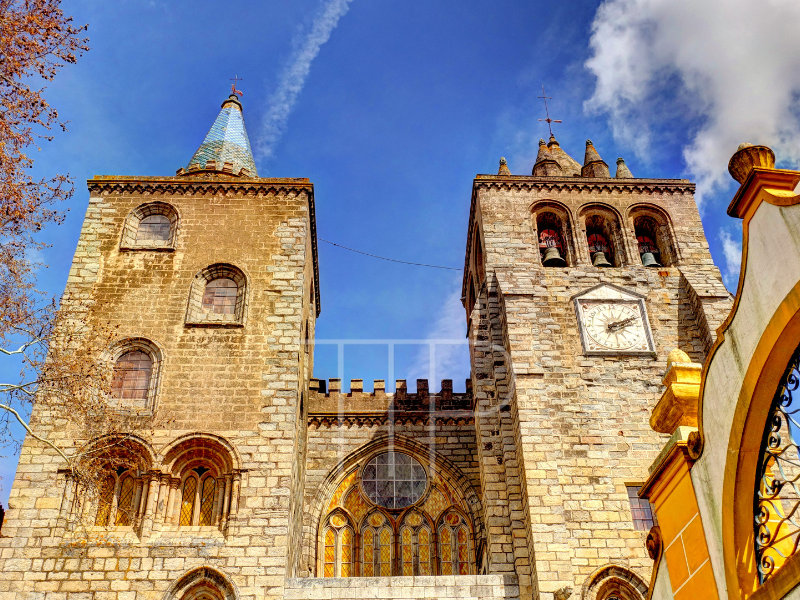The name Alentejo means “beyond the Tagus”. There, not far from Lisbon, lie wild landscapes and ancient magical places…
The Alentejo region stretches from the banks of the River Tagus to the Algarve and is the region with the fewest inhabitants in Portugal. Here, unspoiled nature meets time-honored buildings, famous stretches of beach and impressive natural sights. The Alentejo is the perfect place for anyone wanting a vacation away from the crowds of tourists in the Algarve or Portugal’s capital Lisbon.
Highlight in the Alentejo: provincial capital Évora
In the middle of the Alentejo, around an hour and a half’s drive east of Lisbon, lies the university and provincial capital of Évora, which became the residence of the Portuguese kings in the 15th century. Its historic center can be easily explored on foot in an afternoon; today it is a UNESCO World Heritage Site.
Your tour could start with the Romans: at the Templo Romano. It was long said to have been a place of worship to pay homage to Diana, the goddess of hunting. In 2017, after a thorough investigation, two German archaeologists came to the conclusion that it was a place of worship – but that Emperor Augustus (63 BC-14 AD) was honored there. The 14 Corinthian columns made of marble are among the best preserved on the Iberian Peninsula. They were walled in for centuries and were only uncovered at the end of the 19th century. Right next to the temple is Sé Cathedral, a magnificent Gothic building constructed between 1245 and 1350. Its most famous ornament is the statue of the pregnant Mary, in whose honor a little bell was once rung after every birth.

From the cathedral, it’s a five-minute stroll to the Igreja de São Francisco, famous for its bone chapel. The walls and pillars are covered with more than 5,000 skulls and bones. Towards evening, you should find a nice spot in one of the street cafés on the large Praça do Giraldo. Then you will have arrived in the heart of the life of modern-day Évora.
Menhirs: natural sights in the Alentejo region
Many locals simply call them pedras (stones) – and some are surprised when visitors from all over the world arrive and form circles around one of the granite pillars, holding hands, to feel the magical power that is said to emanate from them. The stone circles are considered to be evidence of the Portuguese megalithic culture, which lasted from around 4,400 to 2,000 BC. How the menhirs came to be where they are and what exactly they mean is still a subject of scientific debate.
In the area around Évora alone, there are around 170 remains of ancient cult sites in the beautiful landscape. At the Recinto Megalítico do Xerez near Monsaraz, for example, 50 blocks up to 1.5 meters high are grouped around a granite column around four meters high. From there, it is not far to the Cromeleque dos Lamendres to the west of Évora, which is often compared to the English Stonehenge. Originally, it consisted of over 100 granite blocks carved with eye, sun or moon motifs. It is the largest collection of menhirs on the Iberian Peninsula and one of the most important sites in Europe.
Comporta: The beach of high society
A white, seemingly endless beach – on one side the clear, turquoise Atlantic and on the other the cork oaks, pine trees and rice fields through which storks and flamingos wade: Comporta is overwhelmingly beautiful. Nevertheless, the small town, located almost 60 kilometers south of Lisbon on the Alentejo coast, was long considered an insider tip.
In the mid-1950s, a scion of the Espírio Santo banking dynasty founded the “Herdade da Comporta”, a 13-hectare estate here. He wanted to develop Comporta into a luxurious vacation paradise, but the rush of tourists failed to materialize and the number of hostels was rather modest – until the banking empire fell apart in 2014 and the state took over. Since then, there has been a renewed focus on promoting protected nature and luxury accommodation, and the area is flourishing. Now it’s no longer just surfers who come here, but also Lisbon’s high society and the international jet set. Shoe guru Christian Louboutin, designer Philippe Starck and German painter Anselm Kiefer all have a residence there. Even pop icon Madonna is said to have been spotted riding out on the beach.

If you enjoy this illustrious company – and have the budget for it – you can book one of the 23 rooms in the “Sublime Comporta” hotel, for example. They are furnished in a minimalist style with lots of white and wooden sculptures. Of course, there is also a spa, a pool and two excellent restaurants. If you only come to Comporta for a meal or a drink, the “Cavalariça”, as the name suggests, used to be a horse stable. Today it is a restaurant offering “zero kilometer plates” (all ingredients come from the surrounding area). And for a Vinho Verde at sunset with the sound of the sea, there is the lovely beach bar “Sal” in Pego.
Activities in the Alentejo: Tour on the Rio Mira
If you fancy an active vacation, you should take a kayak or canoe across the Rio Mira in the west of the Alentejo: Start in the medieval town of Odemira and head north past fields and small villages to the tiny village of Casa Branca. The Rio Mira is tide-dependent, so you should always check the tide beforehand to find out the best time to set off. It flows partly through the “Parque Natural do Sudoeste Alentejano e Costa Vicentina” national park – take a close look around and enjoy the unspoiled nature of the Alentejo.
Related article: Alentejo – the undiscovered alternative to the Algarve

